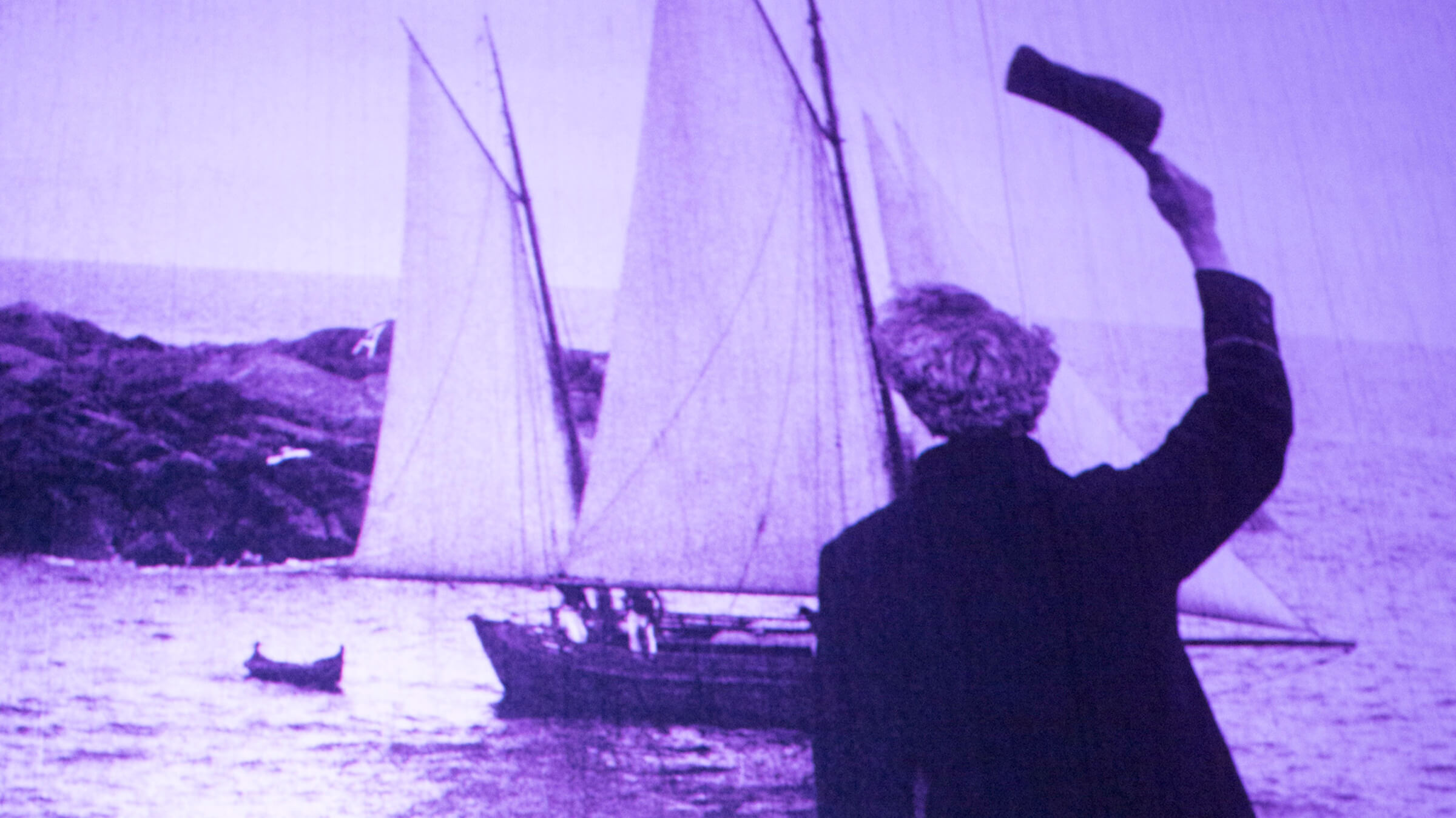This feature was published in conjunction with the screening of L’Homme du Large at SFSFF 2019
The sea has exerted a tidal pull on filmmakers ever since cinema’s beginnings, offering a recognizable—if ever-shifting—thematic shorthand, suggesting, in turn, nature at its most savage and unconquerable, most spiritually purifying, or most mysteriously other.
A MAN THERE WAS
1917 Victor Sjöström’s adaption of Ibsen’s epic poem Terje Vigen sets the template for what has become a familiar movie hero, the man of the sea. He’s more at home on water than land. He’s tossed about by the dangerous currents and whirlpools of civilization. He’s impulsive yet pure of heart. Sjöström also establishes a visual language for the seafaring film, with its pounding surf, barren rocks, and grizzled seafarers clambering around the deck in rough-knit sweaters and rakish caps (reams could be written on the sartorial significance of sailor costuming). For this Norwegian sailor whose wife and child die of starvation when he is captured by a British naval ship during the Napoleonic wars, the sea is both purifier and place of penance. Opening with a stunning shot of an older Terje looking out at crashing waves framed by a window, the film also establishes the seaman’s essential solitude and the borderland he inhabits, caught between land and ocean, civilization and nature.
THE NAVIGATOR
1924 Buster Keaton opens his comical spin on the lost-at-sea story à la A Man There Was, with a window framing the sea. This time, however, there’s a group of men around it (the spies whose machinations set the plot in motion) and the focus is the ocean liner of the title. Keaton’s rich innocent is set adrift aboard the vessel, empty except for Betsy (an Olive Oyl-like Kathryn McGuire), the girl who recently rejected his marriage proposal. The solitude of the sea is played for laughs, as the two scurry around the vast ship, each searching for and always missing the other. In this version of Nature vs. Civilization, the ship is a kind of man-made desert island, and Keaton and his girl an inventive Swiss Family Robinson, adapting to the outsize scale of their new home with a slew of jerry-rigged devices. Their modus operandi is to treat the lonely ocean as if it were Main Street—Keaton even sets up a “men at work” sign during a jaunt to the ocean’s floor. The pair is eventually downsized to a canoe, then a life preserver, and finally they sink below the waves, only to be lifted back up by a submarine. But as in most seafaring movies, the ocean’s purifying force has had its effect—Keaton gets a kiss from his girl in the final frame and sends the sub spinning.
DOCKS OF NEW YORK
1928 Josef von Sternberg’s moody, romantic melodrama exists entirely in the borderland between land and sea, savagery and civilization. Its setting is the Sandbar, a sailor’s cabaret, “a cable’s length from the wharf,” in a world of fog, shanties, and watery reflections. Sailor and girl meet cute when he fishes her out of the drink one desperate night (the soaked woman in a faint appears in the first two movies as well). Stoker Bill, the sailor, is less independent waterman than he is peon in the bowels of a big ship like the Navigator, but his untamed innocence and boastful claim that “no power on earth can keep me ashore” make him a worthy heir to a wild young Terje Vigen. Mae, the waterfront bargirl, is hardly more domestic, as much in need of civilizing as Bill. After the rescue, a bond grows between these twin outcasts, both teetering between innocence and corruption. Like the marauding cannibals of The Navigator, the Sandbar’s denizens threaten to pull the couple under, and it’s the purifying power of the sea that saves them. “Make believe you died, make believe you’re starting all over again,” Bill tells Mae after her suicide attempt. At the end of the film he, too, performs a self-baptism, diving off his ship to swim back to the girl he left behind and to a new life.
THE GREAT WHITE SILENCE
1924 Herbert Ponting’s documentary of Robert Falcon Scott’s tragic South Pole expedition was intended to celebrate men who left the borderland behind, who crossed the sea to conquer nature at its most savage and then returned to civilization victorious. Alas, nature did not cooperate and the resulting film is schizophrenic; the frequent intertitles—touting the film’s own camerawork and the explorers’ pluck—tell one tale, the astonishing visuals another. As the Terra Nova’s voyage begins, viewers are treated to shots of a crowded New Zealand harbor, intercut with sailors entertaining each other by sparring and dancing jigs. But after the ship steams away from the piers, humans disappear from the footage to be replaced by icebergs, glaciers, and distant volcanoes. The long takes of the iron-sheathed bow cutting through the frozen sea are so hypnotic, the glacial caves so awe-inspiring that when the crew does reappear the effect is jarring. The men play with cats or engage in a soccer game, and these attempts at normalcy, comic in The Navigator, strike a discordant note. Most of the human action was painstakingly staged because of the technical demands of filming in subzero weather, yet occasional moments of realism break through—men’s faces blackened with frostbite, or trudging figures hauling loaded sleds. There is no footage of Scott’s doomed trek inland, but the shot of a dwindling sled disappearing into a sea of whiteness is an ominous portent.
Image credit: Pamela Gentile

